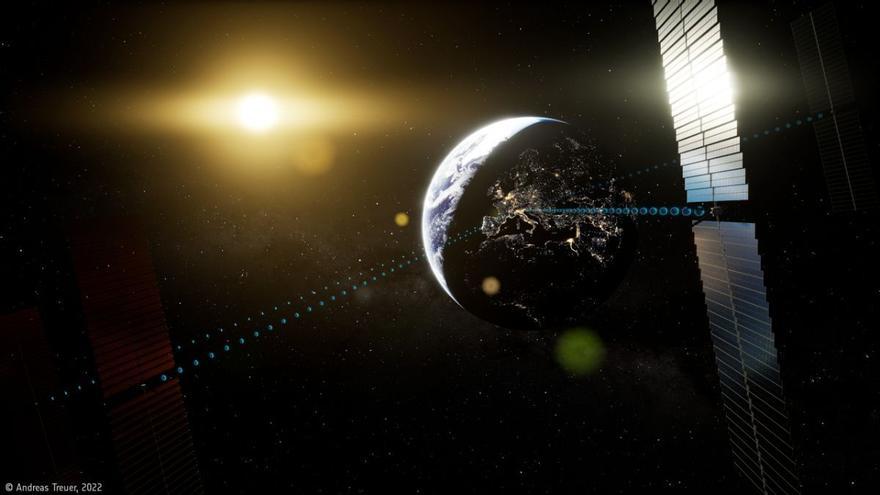The European Space Agency’s (ESA) Solaris program will explore the potential of solar power generation from space (SBSP) to provide clean and sustainable energy to address the continental energy crisis. SBSP consists of harvesting solar energy with huge solar panels in geostationary orbit, located at an altitude of 36,000 km.
Around November 2022, the European Space Agency (ESA) will formally request funding from its member states for a program aimed at the research and subsequent use of space. Space Solar Power (SBSP). The Solaris project will attempt to launch a sustainable energy source with the potential to enable Europe to achieve energy independence.
A super power alternative?
According to an ESA publication, space solar power will be a clean, affordable, continuous, abundant and safe source of energy. The space agency believes that this concept has become more important and necessary in the face of urgency new energy sourcesdue to the search for a greater reduction in net carbon emissions and because of the inconveniences related to the supply of hydrocarbons from Russia.
Based on the needs posed by the continental energy crisis, the European Space Agency carried out two operations Cost-benefit studies Regarding the concept of space solar energy. Although the results will be presented in November this year when funding is requested, ESA technicians consider the project viable.
According to a Space.com article, SBSP consists of harvesting solar energy using giant solar panels. geostationary orbit, an orbit that places them at an altitude of 36,000 km. At this location, satellites are shown hanging over a fixed point on Earth.
By not obstructing Earth’s atmosphere, space solar power plants can produce energy more efficiently than plants operating on the planet’s surface. Once collected, The energy will be sent to the surface and converted into electricity.
Video: To prepare Europe for future solar space decisions, the European Space Agency has proposed a preparatory programme, initially called Solaris. Credit: European Space Agency, ESA/YouTube.
Projects around the world
On the other hand, an article in FayerWayer notes that Europe will not be alone in these efforts: China, the United States, and the United Kingdom are also planning to install space solar power plants in the next decade. specific, China It will take 10 years to develop this concept: by 2028, it will be able to produce one megawatt in space, a production that in 2050 will reach one gigawatt.
The Asian giant project relies on photovoltaic panels that capture solar energy in space, which is then derived by lasers to a station on Earth, in a constantly maintained flow. These rays are subsequently converted into electricity and distributed to the Chinese power grid.
Related news
While, United State In 2021, it would already have successfully tested a solar panel with the ability to capture energy and send it from space to any point on Earth, using microwave technology. Apparently, the US Army received $178 million to study solar energy in space, although it had previously rejected it due to the technical complexity involved.
finally , United kingdom It plans to finalize its independent project SBSP by 2035. To do this, it has formed a network of 50 well-known technology organizations, including, for example, Airbus, the University of Cambridge or the satellite manufacturer SSTL, among others. Will be space solar energy How to overcome energy and environmental problems at the global level?





